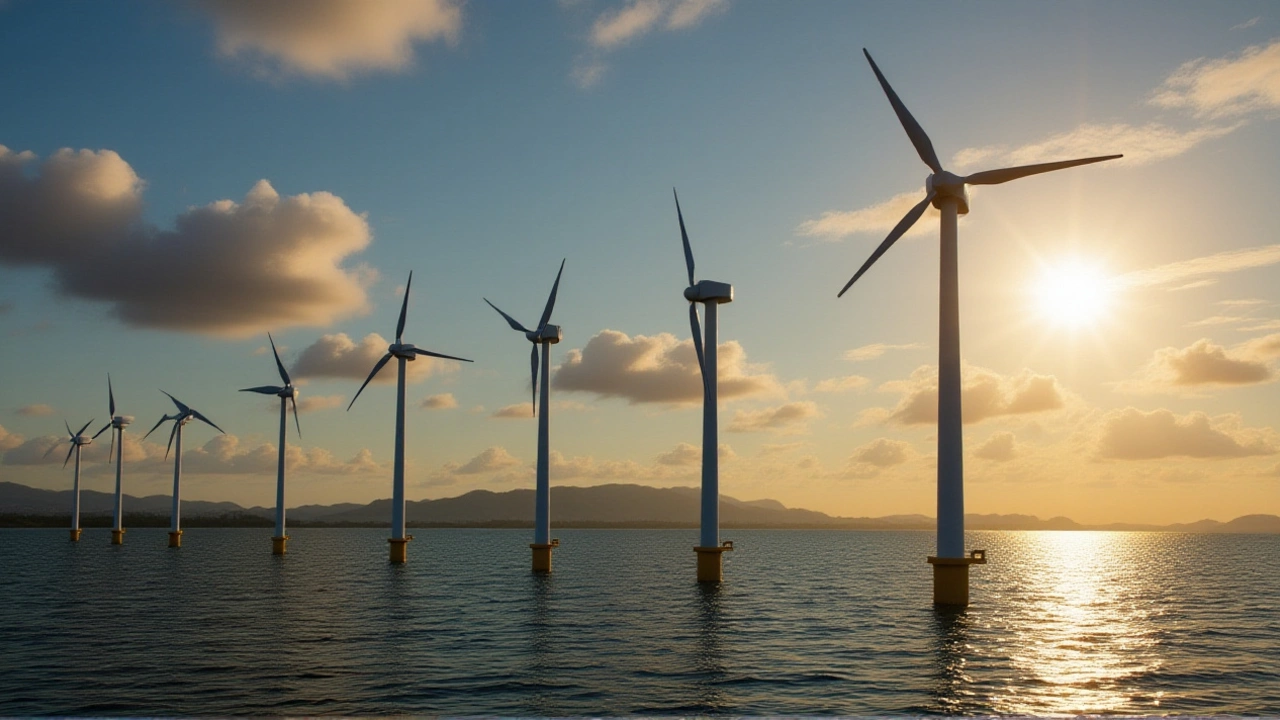Petrofac files for administration, putting 7,300 global energy jobs at risk
 Oct, 28 2025
Oct, 28 2025
When Petrofac filed for administration on October 27, 2025, it didn’t just trigger a corporate collapse—it sent shockwaves through the global energy sector. The UK-based engineering giant, once a powerhouse in oilfield services and offshore infrastructure, now faces the grim reality of potentially losing 7,300 jobs worldwide after Dutch grid operator TenneT abruptly terminated its $14 billion offshore wind contract. The decision, made on October 23, 2025, wasn’t random. It was the final blow to a company already on life support, crippled by years of legal fallout and failed turnarounds.
How TenneT’s Move Crushed Petrofac’s Financial Backbone
The contract termination wasn’t a surprise to insiders. Petrofac’s engineering and construction division relied on TenneT for more than 80% of its revenue—a dependency so extreme that when the Dutch firm pulled the plug, the math became impossible. The project? A 2GW offshore wind grid linking the Netherlands’ growing renewable fleet to the mainland. Petrofac’s role: engineering, procurement, construction, and installation (EPCI) of platforms and onshore converter stations. It was supposed to be the crown jewel of its renewable transition. Instead, it became its coffin. TenneT cited repeated failures to meet contractual milestones. Court filings show Petrofac missed deadlines on critical component deliveries, lagged on safety compliance audits, and failed to respond to technical queries in time. By October 21, 2025, TenneT had issued a formal notice of default. Three days later, the termination was final. "It wasn’t just about delays," said one industry analyst familiar with the project. "It was about trust. Once you lose that in offshore engineering, you lose everything."A Legacy of Scandal and Stalled Recovery
Petrofac’s downfall didn’t begin in October 2025. It began nearly a decade earlier, in 2017, when the UK’s Serious Fraud Office concluded a multi-year investigation into bribery allegations in the Middle East. The result? A £70 million ($93.5 million) fine and a black mark that haunted its bid teams for years. Major clients in Saudi Arabia, Kuwait, and Abu Dhabi stopped inviting Petrofac to tender. Revenue from its core Middle East operations collapsed by 65% between 2018 and 2023, according to internal reports cited in court filings. The company tried to pivot. It bet big on renewables. But the transition was messy. Projects ran over budget. Management turnover was high. And by 2024, its share price had fallen 90% from its 2014 peak. A rescue plan emerged in early 2025: hedge funds Mason Capital Management and Nut Tree Capital Management offered to convert $845 million in debt into equity and inject fresh capital. It looked like salvation. Then came the Court of Appeal decision in July 2025London. Judges ruled the deal unfairly favored insiders and ignored the rights of unsecured creditors. The plan was dead. And with it, Petrofac’s last realistic chance to avoid insolvency.North Sea Operations Still Standing—For Now
Here’s the twist: Petrofac’s administration doesn’t mean all operations are shutting down. The company confirmed that its North Sea business—centered in Aberdeen and employing around 2,000 people—is operating normally. That’s because those units serve long-term oil and gas clients under separate contracts, with stable cash flow and minimal exposure to the TenneT fallout. "We’re not shutting down Scotland," said a Petrofac spokesperson. "We’re fighting to protect the parts of this company that still work." The administration is targeted—only the ultimate holding company is under court control. The subsidiaries in the UK, Norway, and Oman remain operational. That’s critical. It means clients can still rely on Petrofac for maintenance, inspections, and platform upgrades. But the uncertainty is eating away at morale. Contractors are pausing payments. Suppliers are demanding cash upfront. One offshore technician in the North Sea told us: "We’re still showing up. But we don’t know if our paychecks will clear next month."
Creditors Hold the Keys—But for How Long?
Despite the chaos, Petrofac still has lifelines. Its Revolving Credit Facility (RCF) and Term Loan lenders have agreed to extend maturities on a rolling basis. Bondholders, led by the Ad Hoc Group of Noteholders, are maintaining forbearance agreements. These aren’t acts of charity—they’re strategic bets. Many of these creditors own stakes in other energy firms and believe Petrofac’s assets, particularly its engineering teams and vessel fleets, still hold value. The administrators, appointed by the High Court of England and Wales, have one mandate: preserve value. That means keeping projects running, honoring key client contracts, and shopping the company for a buyer. Talks are underway with private equity firms and even rival contractors like Subsea 7 and Saipem. But time is short. Every day without a buyer drains cash.What Happens Next? The Ripple Effects
If Petrofac’s assets are sold piecemeal, hundreds of skilled engineers and project managers could flood the market—driving down wages in an industry already struggling to retain talent. If it’s bought whole, the buyer may cut redundant roles, especially in its London headquarters. Either way, the offshore wind sector will feel the impact. TenneT now has to find a replacement contractor for the 2GW project—likely delaying the timeline by 12–18 months and increasing costs for Dutch consumers. The broader lesson? Energy transition isn’t just about building turbines. It’s about building resilient companies. Petrofac’s collapse shows how one failed contract, layered on top of years of mismanagement and legal scars, can unravel even the most established firms.Frequently Asked Questions
How does this affect energy workers in the UK?
While 2,000 employees in Scotland remain employed for now, the broader 7,300-job threat looms over global operations. Contractors and suppliers tied to Petrofac’s engineering division may face layoffs as projects stall. The North Sea workforce is currently protected, but if no buyer emerges by early 2026, even those roles could be at risk. The UK government is monitoring the situation closely, especially given the strategic importance of offshore energy infrastructure.
Why did TenneT terminate the contract so abruptly?
TenneT cited repeated contractual breaches, including missed delivery deadlines, failure to meet safety standards, and lack of responsiveness to technical requests. The 2GW project was critical to the Netherlands’ 2030 renewable targets. With delays piling up and penalties mounting, TenneT had no choice but to act to avoid regulatory penalties and public backlash over stalled clean energy progress.
Could Petrofac have avoided this if not for the 2017 fraud case?
Almost certainly. The £70 million fine and subsequent blacklisting in the Middle East cut off nearly half of Petrofac’s revenue stream. That forced the company into expensive, high-risk bets like offshore wind without the financial cushion to absorb setbacks. Without the fraud scandal, Petrofac likely would have had the capital and reputation to weather the TenneT blow.
What’s the status of Petrofac’s remaining projects?
All non-TenneT projects—including North Sea oil maintenance, Oman gas facilities, and Norway’s subsea installations—are continuing as normal. Administrators have confirmed they’re prioritizing client continuity. However, new contracts are frozen until a buyer is found or restructuring is finalized. Clients are being reassured, but many are quietly preparing contingency plans.
Is there any chance Petrofac will survive as a standalone company?
Unlikely. The administration process is designed to sell assets or restructure under new ownership. Even with creditor support, the company’s balance sheet is too damaged for independent recovery. Analysts believe the most probable outcome is a breakup, with parts sold to rivals like Subsea 7 or TechnipFMC. The Petrofac name may disappear within two years.
What does this mean for the future of offshore wind in Europe?
It’s a warning shot. The offshore wind supply chain is still fragile. Petrofac’s failure shows that even large, experienced firms can collapse under contract pressure. European governments may now demand stricter financial guarantees from contractors. This could raise costs and slow deployment—exactly what climate targets can’t afford.